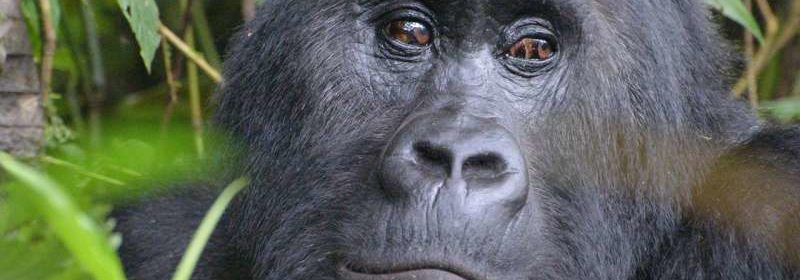Action plan released to conserve one of Africa’s richest sites for biodiversity

A team of scientists led by WCS (Wildlife Conservation Society) has developed a conservation blueprint to protect one of the most biodiverse regions in Africa: the Albertine Rift, home to mountain and Grauer’s gorillas, golden monkeys, chimpanzees, elephants, and 162 vertebrate, and 350 plant species unique to this region.
Building on an initial framework plan developed in 2004, the new plan highlights the importance of the region for global biodiversity and goes further to outline the main steps required for the conservation of each landscape. The plan assesses where within each landscape is most important for the conservation of the many unique and threatened species, both now and under projected climate change, and identifies which species remain unprotected.
“The Albertine Rift is the most important site for vertebrate conservation in Africa, with more endemic and globally threatened vertebrates than any other region of the continent,” said Dr. Andy Plumptre, Senior Scientist for WCS’s Africa program. “We know of 163 terrestrial vertebrates that are unique to this region and we keep discovering new species. We also know the lakes in this region have incredible fish diversity and that at least 350 species of plant are unique to the region.”
WCS has conducted surveys of the biodiversity of the Albertine Rift over decades, supporting surveys of some species and specific sites as early as 1959 in the case of eastern gorillas (one of the endemic species). A more comprehensive program started by WCS in 2000 compiled region-wide data on mammals, birds, reptiles, amphibians and plants. WCS worked with other NGO partners and the environmental protection authorities of Burundi, the Democratic Republic of Congo, Rwanda, Tanzania, and Uganda to identify six key landscapes and to establish cooperative protection at ground-level in each.
Threats to the landscapes are substantial because this part of Africa also contains some of the highest human population densities on the continent. Habitat loss is the most critical threat for most of the species. Modeling work described in the report showed that the endemic and threatened species have already lost on average 40 percent of suitable habitat to agriculture. Climate change is likely to drastically reduce the remaining suitable habitat.
“We predict that by the end of this century, endemic species will further decline in response to climate change as many of these species will need to move to higher elevations as the climate warms. These up-slope movements will result in a dramatic 75 percent reduction in suitable habitat,” said Sam Ayebare, a conservationist for WCS Uganda.
Many of the areas currently under protection are essential for the conservation of these species. Three additional areas, totaling over 10,000 square kilometers, that were gazetted in 2016, Itombwe, Ngandja and Kabobo Reserves, were critical for protecting many additional endemic species, both now and under future climate change. The report assesses the optimum ways to conserve these endemic and globally threatened species, and identifies which areas not currently under protection remain important for the conservation of some of the species.
“These critical sites outside of the existing protected areas mostly occur in DR Congo,” said Deo Kujirakwinja, Technical Advisor for WCS in DR Congo. “We need to focus our attention on these sites before they, and the unique species they contain, are lost.”
Supporting the conservation and management of the six landscapes within the Albertine Rift will require a dedicated effort from governments and from the conservation community. However, investment in conservation in this region yields tremendous value because of its incredible species richness.
